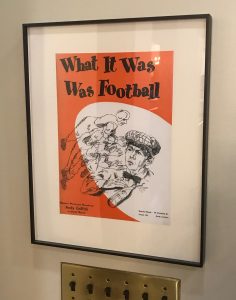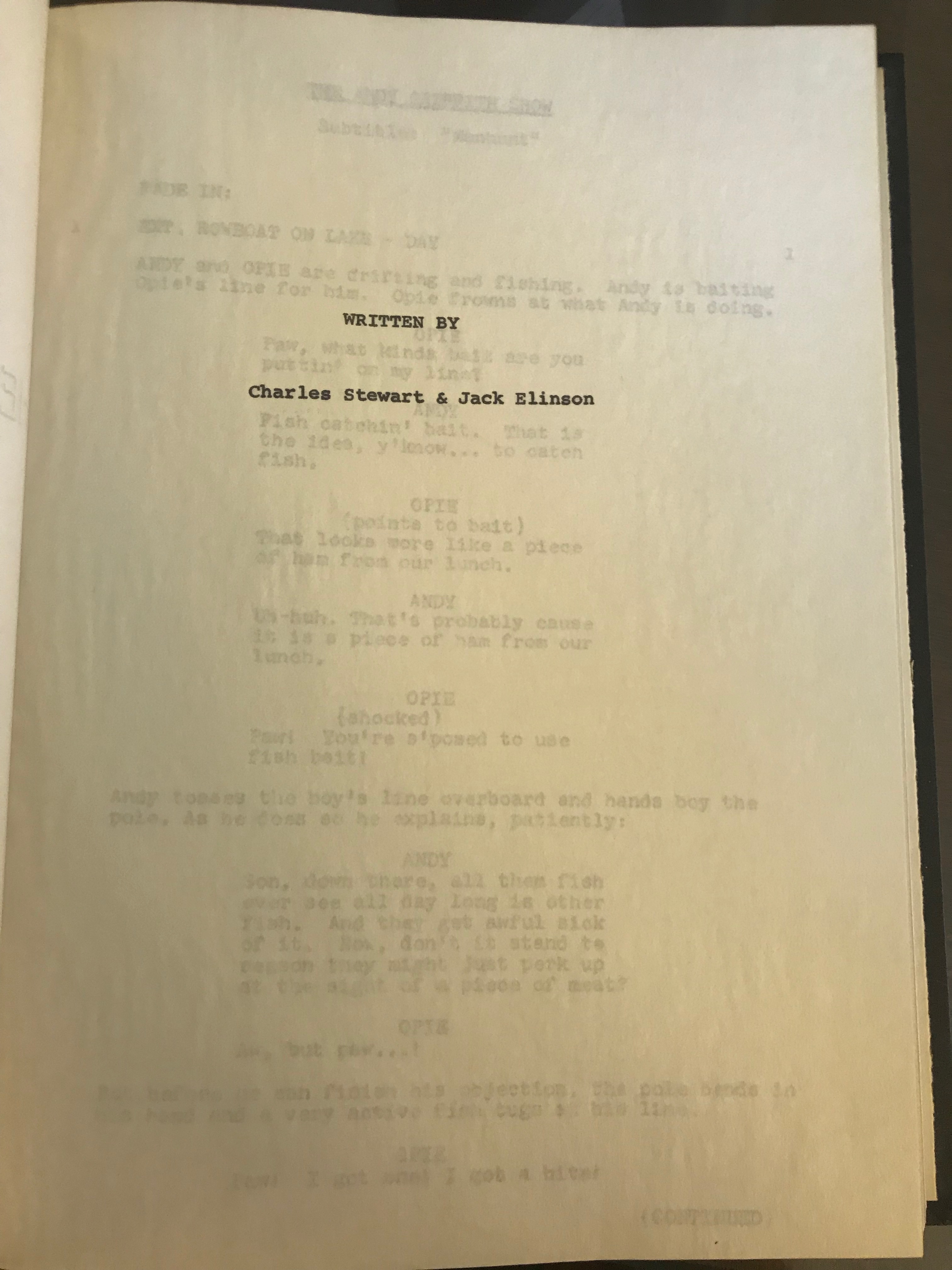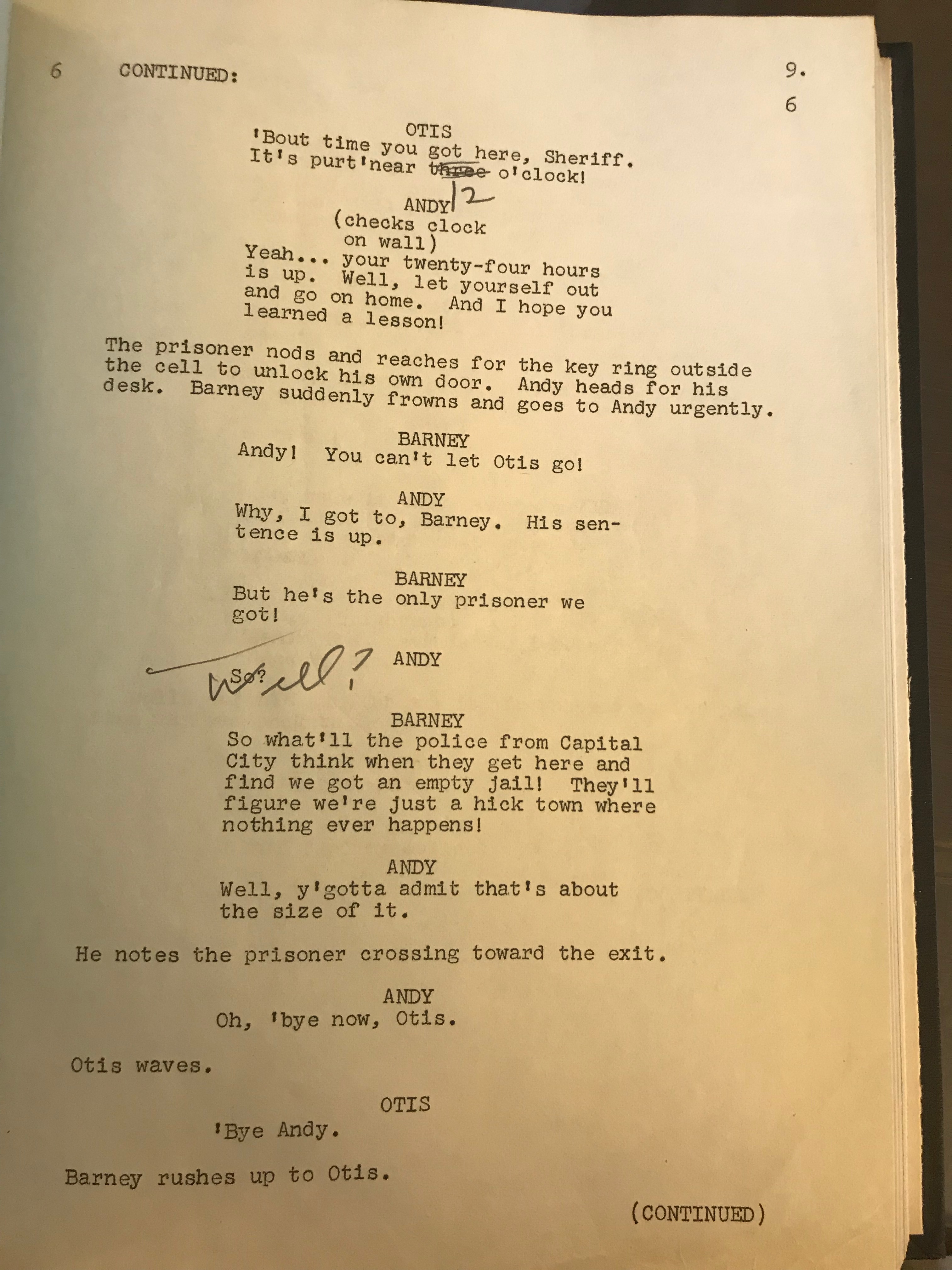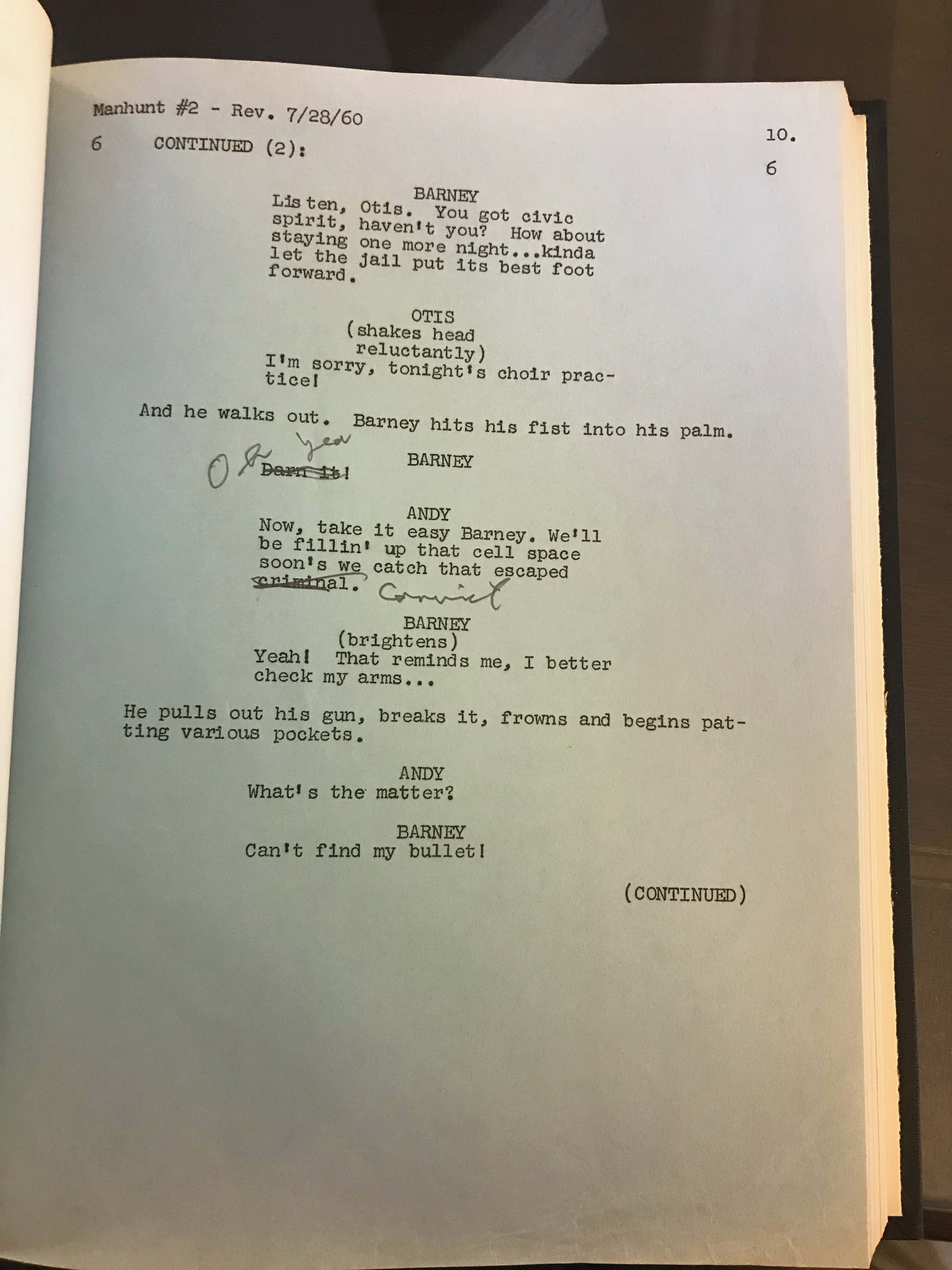
I don’t mind to admit that I was downright giddy with excitement to actually be thumbing through Andy Griffith’s original scripts knowing he had held these scripts in his hands and done the same. It was an amazing experience for me.
The shooting scripts are on several different colors of paper. The colors seemed to eventually vary a bit, but in the earlier seasons, the original script was usually printed on a light canary yellow paper that almost photographs white. In later seasons, they were instead sometimes on white paper and sometimes on a vivid goldenrod. Several of the scripts by Aaron Ruben were printed on goldenrod and had little or no revisions, which should not come as a surprise since he was the story supervisor for the series.
Occasionally, a white, thin onionskin paper would be used for a page or two. Likewise, occasionally some pages were copies printed on a thicker, slick paper that is now nearly illegible. Presumably, this was because Andy’s scripts were missing some pages for whatever reason when it came time to bind them and these were copies to fill in the gaps.

The initial submitted script would always be on a single color (traditionally white paper but with the Mayberry scripts, often light yellow). The use of other colors of paper would not occur until a script had been accepted to be used and was locked in for scheduling.
The use of different colors of paper for revisions has always been standard practice for several reasons. Using different colors of paper makes it easier to keep track of revisions. The use of colored paper as inserts saves on photocopy costs (which at the time of The Andy Griffith Show would have been mimeograph costs). There is no need to reprint the entire script for each cast member. It is cheaper just to print the pages with changes and replace the original pages with the new inserts. Finally, it also saves time as cast and crew often write notes or changes in a script by hand, If they did so on a page that was not being revised yet the entire script was replaced, they would have to re-write their notes.

After a title page, the next page lists the writers. At least one of the early scripts was not dated at all even though accepted “as is.”

However, most of the writers’ credit pages were dated with the original date. These were also scripts which had been accepted “as is.”

Sometimes scripts, including “The New Housekeeper,” were sent back to the writers for a more extensive revision. The writers’ credit pages for those scripts instead included the date the revised script was submitted.

As noted, upon occasion last-minute revisions were made during shooting and were usually written in by Andy himself in his own copy of the script just as the other actors would have noted the same changes in their own handwriting in their copies. But the scripts underwent more revisions than those made last-minute.

Regardless of whether the script had been completely revised by the original writers or not, after the table read, additional revisions were usually made based on input from the actors. The revised pages are on light blue paper and are inserted, always with the date of the revision on top.

Finally, story consultant and producer Aaron Ruben would do a final polish. His pages are in pink and are inserted with no date of revision.

These final pages did not contain a revision date. If you watch this scene in “The Guitar Player,” you will see James Best slightly changed his dialogue.


Enjoyed this very much, thanks Randy !